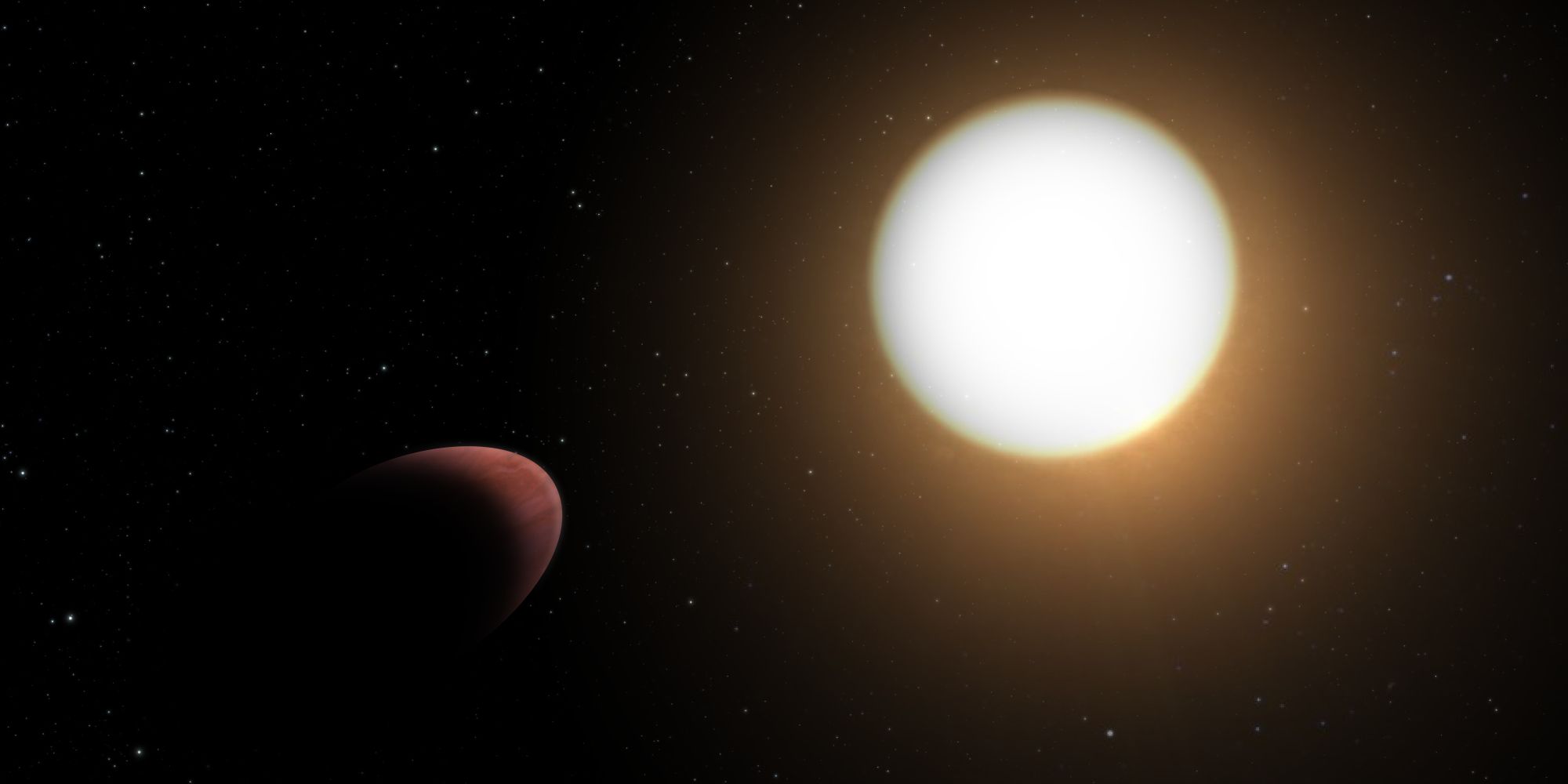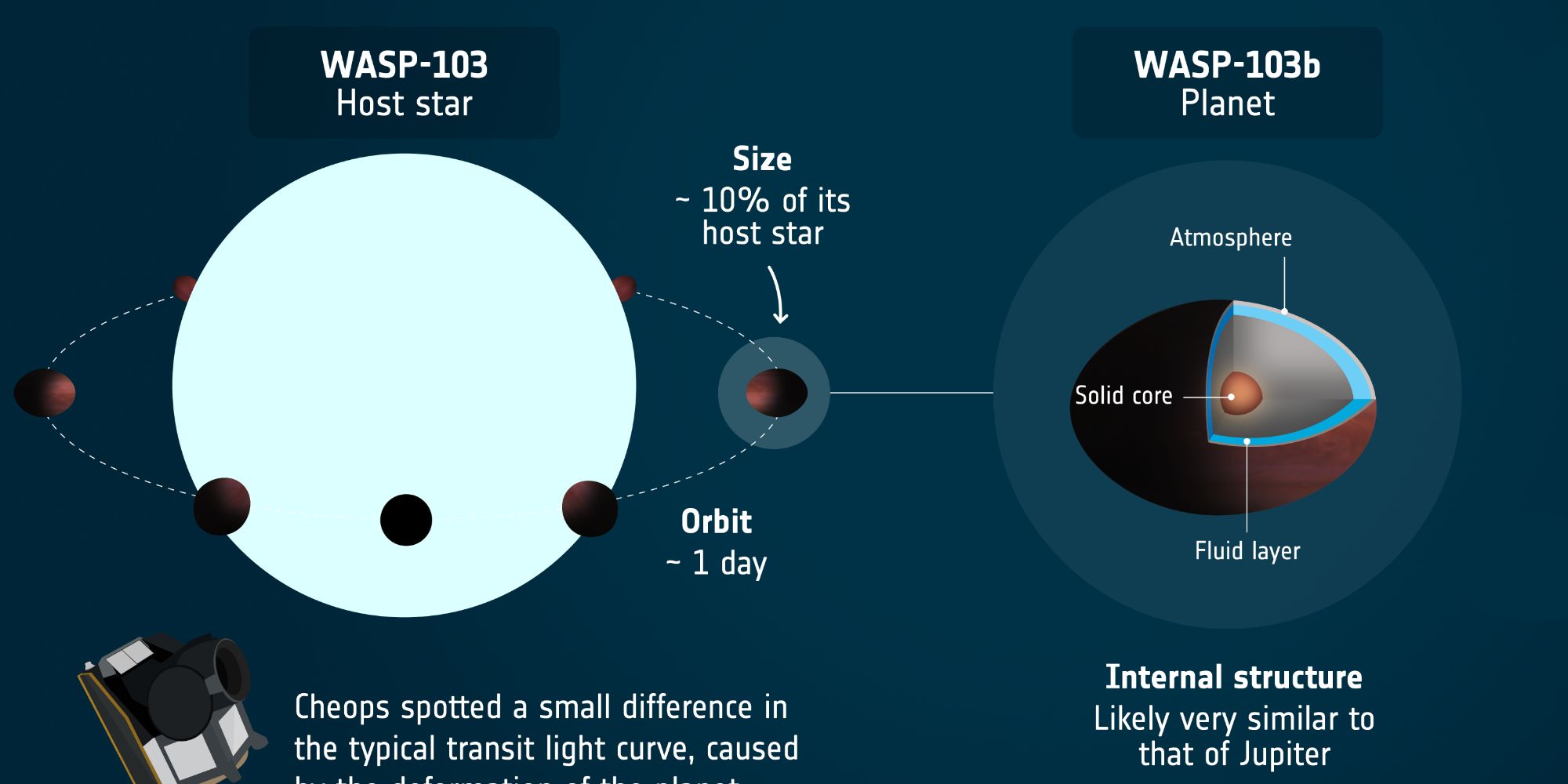Outer space is filled with all sorts of mind-boggling things — such as a newly found exoplanet with a truly bizarre shape. If there's one constant in our universe, it's that there's never a dull moment with it. One day, astronomers are looking at fascinating pictures captured by Perseverance from the Martian surface. Another day, they're hearing strange sounds from one of Jupiter's many moons.
And those are just things happening in our own Solar System! When humans look beyond our little home in the universe, things become even more dazzling. Hubble regularly shares photos of gorgeous galaxies and nebulae that are multiple light-years away from us. Astronomers are also constantly hunting for new planets outside of the Solar System. Often referred to as 'exoplanets,' hundreds of new ones were officially confirmed in 2021 alone. Each new planet provides invaluable knowledge about both its creation and the history of the known universe, making every single discovery important in its own right.
Another one of these exoplanets was recently detected by the ESA, and it's something astronomers have never seen before. The exoplanet in question is known as WASP-103b. It's located in the Hercules constellation and is likely a more dangerous version of Jupiter. Astronomers believe it has a similar structure to Jupiter, along with a 1.5x greater mass, 2x greater radius, and 20x hotter temperature. None of those things are what have astronomers perplexed. Instead, it's WASP-103b's shape. Simply put, the planet is deformed.
How This Exoplanet Got Its Strange Shape
While every planet has unique characteristics, there's typically one thing they all have in common: a circular shape. Gravitational fields begin in the center of a planet and cause nearby materials to be pulled towards it — thus creating the circular shapes we've come to associate with all planets. This isn't something that's present with WASP-103b. Instead, it looks like an elongated oval (not unlike a football or a rugby ball). It's the first deformed exoplanet astronomers have ever detected, and based on the current research, we may already know the cause for the planet's unique shape.
It all comes down to powerful tidal forces. On Earth, tides are regularly seen in oceans largely thanks to the Moon. The Sun has its own tidal force, too, but it's so far away from Earth that it's hardly noticeable. The exact opposite is true of WASP-103b. Thanks to its dense mass and extremely close position to its host star (an orbital period takes less than a day), astronomers think intense tides from the star are gradually stretching the planet to look the way it does.
There's just one problem with that hypothesis. The nature of this star and WASP-103b would normally suggest that the planet's orbital period would speed up and it'd gradually drift closer to the star — eventually being consumed by it. Instead, WASP-103b appears to be getting a longer orbital period while moving further away from its star. In other words, it could be something entirely separate from tides causing the strang shape. Whatever the answer is, astronomers are determined to figure it out. Future missions with the ESA's Cheops satellite could offer more insight into WASP-103b, as could the recently launched James Webb Space Telescope. It's unclear when we'll have a better understanding of the planet, but it's certainly one worth keeping an eye on.
Source: ESA


